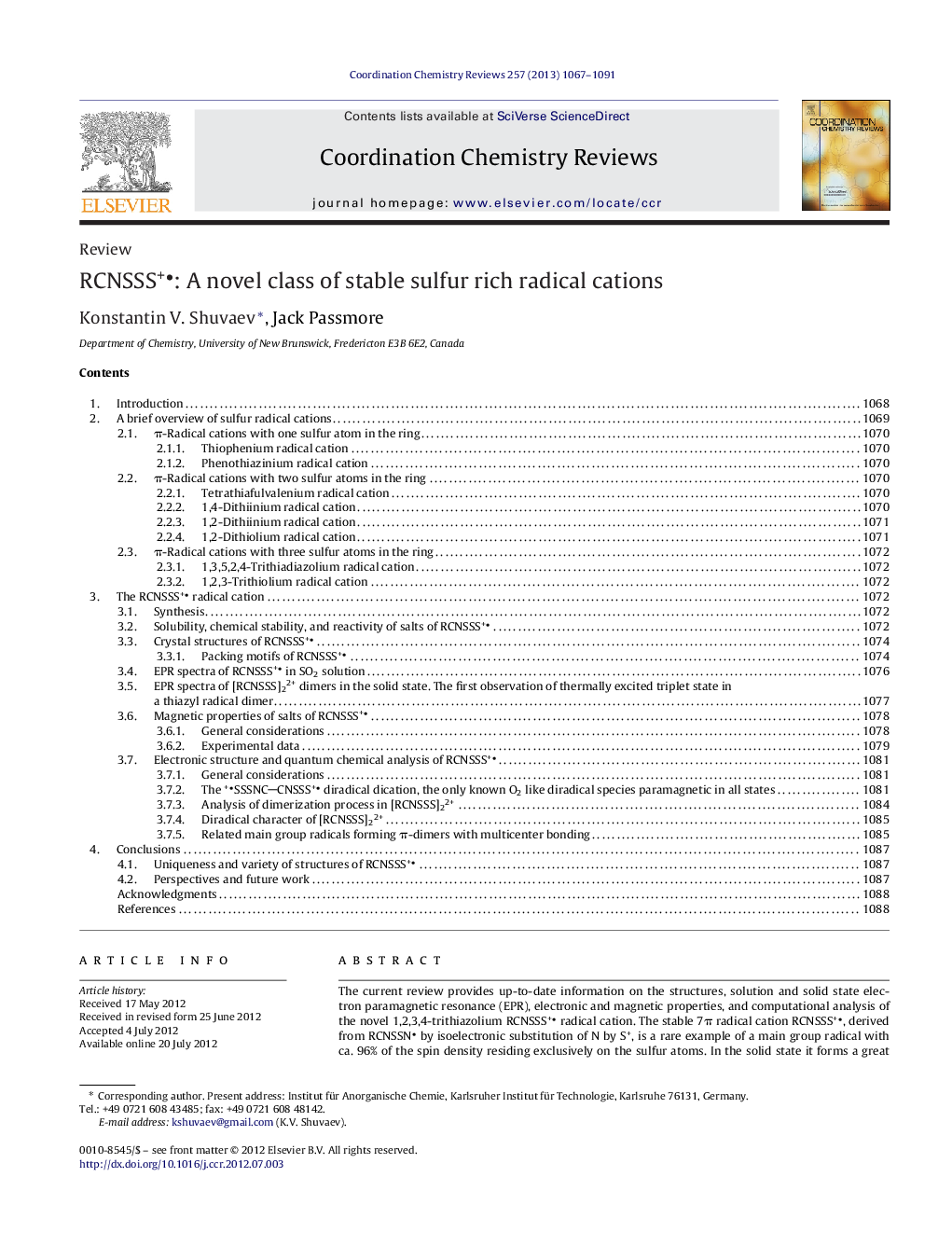| کد مقاله | کد نشریه | سال انتشار | مقاله انگلیسی | نسخه تمام متن |
|---|---|---|---|---|
| 1300064 | 1498763 | 2013 | 25 صفحه PDF | دانلود رایگان |

The current review provides up-to-date information on the structures, solution and solid state electron paramagnetic resonance (EPR), electronic and magnetic properties, and computational analysis of the novel 1,2,3,4-trithiazolium RCNSSS+ radical cation. The stable 7π radical cation RCNSSS+, derived from RCNSSN by isoelectronic substitution of N by S+, is a rare example of a main group radical with ca. 96% of the spin density residing exclusively on the sulfur atoms. In the solid state it forms a great variety of structures, which, depending on the nature of the substituent group, range from dimeric to monomeric. This results in markedly different magnetic properties in which the magnetic coupling varies from −2100 cm−1 to −2 cm−1, respectively. An important highlight in the chemistry of RCNSSS+ is the preparation of (CNSSS+)22+, which contains two radical centers directly joined by a single bond and is paramagnetic in all states, making it the only O2-like species in main group chemistry. Also important is the observation, by EPR, of a triplet excited state in the [RCNSSS]22+ dimers and estimation of the dimerisation energy of the very weak inter-molecular S⋯S bonds as ca. −11 to −3 kJ/mol. The radical pairs [RCNSSS]22+ also possess a high diradical character, ranging from 45 to 32%, thus lying on the borderline between conventional open shell and closed shell species.
► 1,2,3,4-Trithiazolium is a novel class of stable radical.
► It has 96% of the spin density residing on the sulfur atoms.
► 1,2,3,4-Trithiazolium shows different magnetic properties ranging from dimeric to nearly isolated radical cations.
► Diradical (CNSSS+)22+ contains two radical centers directly joined by a single bond and is the only O2-like species.
► A triplet excited state was observed in the [ClCNSSS]22+ dimer and the triplet–singlet gap was determined by EPR.
Journal: Coordination Chemistry Reviews - Volume 257, Issues 5–6, March 2013, Pages 1067–1091